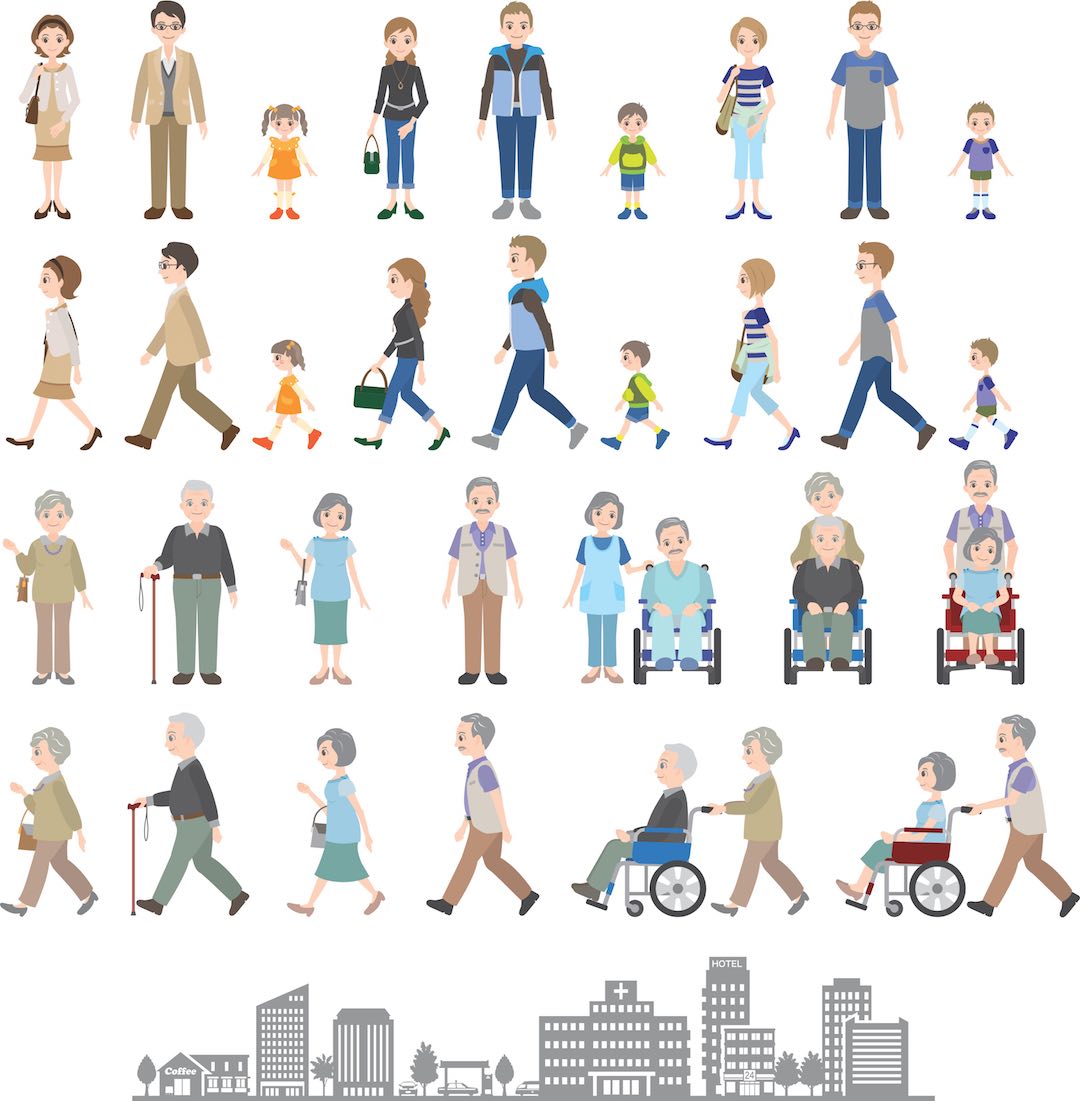
“If we lose love and self-respect for each other, this is how we finally die.”
– Maya Angelou
Terminal care is considered medical and nursing care for patients in the terminal stage of an illness. There are various types of illnesses that qualify for terminal care. Usually, terminal care is indicated for individuals who have been determined that their lifespan will likely not go beyond six months.
This article is an exploration into the ways and means to bring care, respect, honor, and dignity to someone who is terminally ill, and to convey how crucial it is to the dying loved one, to make this period one of the most precious, and potentially healing life experiences possible. My aim is to offer you different ways of understanding and looking at terminal care, to bring you a sense of peace with a sense of grace to guide you on the way.
In a human being’s lifetime, there is almost no greater need for assistance and physical help than at the time of the human’s dying process. As human beings, we naturally tend and want to rely on each other for help, assistance, and companionship during our living days all the way through to our dying days.
With compassionate respect, professional caregivers are trained to do everything possible for a more comfortable end of life in a gentle way that ensures the preservation of the dying individual’s dignity. The dying person’s loved ones are also more at ease knowing that a professional caretaker is there in such difficult moments.
Care of a terminally ill patient

We know that it’s just a matter of time before our physical bodies go, but the mystery still stands of not knowing when. Therefore, once we hear that diagnosis of a terminal illness/disease, we feel a sense of urgency as to what we need to do. The best thing when foreseeing such an imminent moment is to get an understanding of the choices and treatments that are available. Once a decision is made, it’s about respecting the dying person’s choices and honoring the journey they’ve chosen. How you treat the entire life and death experience makes all the difference.
Many times, the closest people around the terminally ill patient feel paralyzed in what to do, what to say, how to behave or even how to care for his or her loved one. If not cleared in an appropriate manner, the fears of family members and friends are often imposed on the terminally ill patient and the experience sometimes turns into something horrible.
This is the reason why terminal care involves a few choices and processes. Considering care for terminally ill patients usually means that there is no medical cure possible for the disease, so it about making the best choice for a good quality of life for the remaining days of the six or so months. Since the life prognosis is devastating for the individual and everyone concerned, considering a death and dying coach can help navigate the complex feelings and fears to achieve acceptance and make the last days even joyful.
Defining the aspects of terminal care can prove useful in shifting someone’s awareness and perspective, as he/she enters into an end-of-life situation. Shifting into this new perspective can turn what could be a horrible experience, into a peacefully healing one.
Terminal care definitions

A terminal is a place where you arrive at the end of a trip or journey. In this sense, terminal implies that there was a transitional journey made, with a departure from one point and arriving at another, and then perhaps in transit for a final destination. We usually have no issue with this if we are physically traveling, giving no thought that this parallels the route to the end of life as well. However, now we can think of this in the opposite way: we’re on the last leg of the journey transitioning to a gentler place.
Therefore, looking at the terminal ill experience of life as a transitional journey offers a gentler viewpoint, with a sense of acceptance of life’s design eventually phasing in and winning over the last resistance to the final stop. Ultimately it leads to a sense of peace, rather than a constant, disturbing battle of questioning, “why me or why him or her?”.
In any definition, one can find on a terminal, the one thing that they all have in common is that they each have an endpoint of something physical.
Albert Einstein said, “Energy cannot be created or destroyed, it can only be changed from one form to another.” The caterpillar transitioning to a butterfly is another gentle way to think about it. When we look at the notion of death and dying from a transformative perspective, it can offer the way of removing fearful emotions from the experience, allowing the experience to just “be” in its natural place, like a terminal in an airport. No judgments are needed, only an acceptance and surrender that this is what is meant by being part of the bigger design in the evolution of a human’s journey.
Care of Terminally Ill Cancer Patients
 Everyone has the right to live and die with respect, honor, and dignity. So, how do we offer that to one who is terminally ill with cancer or any other disease, and how do we show the same respect, honor, and dignity to ourselves as caregivers?
Everyone has the right to live and die with respect, honor, and dignity. So, how do we offer that to one who is terminally ill with cancer or any other disease, and how do we show the same respect, honor, and dignity to ourselves as caregivers?
In our society sickness can, unfortunately, bring up feelings of shame and embarrassment. People who are elderly or terminally ill sometimes feel bad about their loss of independence, because they feel they’ve become a burden to others. If not approached properly, the kind of care one is offering turns into a shame-fest, not being able to receive care with an open heart. When one chooses to stop all treatment the last remnants of resistance to the final stop begins to dissipate, an intentional sacred dying experience can be created by the caregivers.
Palliative and Hospice: Compassionate Answers for Terminal Care
Maintaining a good quality of life for an individual going through the terminal period, keeping the pain threshold down, monitoring the medications that might be needed, and everything that goes along with being in those final moments must become a seamless integration process. The seamless integration of the different caring aspects and phases involved in those last days in the decline of life is absolutely crucial in giving everyone involved a sense of calm, not only for the dying but also for the loved ones. Caring for someone during their last days is not easy, so it’s best to engage a team of people to help.
Terminal Care at Home or???
Today we are fortunate to have a myriad of care choices for our terminally ill loved ones and patients. The dying-at-home with the family experience has shifted over time. However, studies have shown that approximately 80% of Americans prefer to die at home, if possible. Despite this, 60% of Americans die in acute care hospitals, 20% die in nursing homes, and only 20% die at home. And, in some cultures, dying at home is not even favored, nor do some patients desire it, because they don’t want to be a burden on the family. It’s each one’s decision as to the best fit option in their situation. Caring for our terminally ill loved ones is a bit complicated and still presents a social dilemma.[1]
Caregiver’s Role + Team = Evolution of Terminal Care with Respect, Honor, and Dignity

A caregiver’s role changes depending on where your loved one resides. If your loved one is in an ICU unit in the hospital, he or she will be cared for by the hospital staff, but it is your presence that will demonstrate care.
If your terminally ill loved one is at home (or long-term nursing home), one of the first teams to set in place is a palliative or hospice organization that will come to your house or facility and set everything up that is needed, from hospital beds to medical supplies and medications. They are skilled and trained in caring for a terminally ill patient and go above and beyond what we could possibly do on our own.
Palliative’s and Hospice’s focus revolves around the patient’s needs. Both have on staff, a medical director, a nurse, a nurse’s aide, a social worker, a chaplain volunteers, (who come to take your place when you need to shop or just need a break). They act as your support team, taking care of the terminally ill patient as their number one priority and the family’s needs as well.
If something happens and you don’t know how to handle it, or what to do, you can call the hospice nurse 24/7, and she or he will guide you through whatever your loved one is experiencing, and they will even send someone out to check on the patient immediately if needed.
Having this kind of quality care regards the individual with the utmost respect, honor, and dignity. Caring someone during the last stages of life presents an exquisite time to show that love is the greatest elixir of all time. Just having the opportunity to share and feel love, lets the family members just BE present, which is the greatest gift one can give to another.
It takes a Village/Team for Terminal Care

If you are the primary caregiver, you will need a support team around YOU to help you through the experience. If you think you can do everything, your energy will soon be depleted, and you will have no energy to care for anyone. This is a delicate balance, but make no mistake, that if you do not put on the oxygen mask first, as you would on an airplane, you will not have sufficient oxygen to continue to care for anyone, including yourself.
Ask for help. Enlist all those who are committed to helping you. This can be several friends making a meal once a week, sitting with the dying loved one while you take a break for personal things, writing email updates, and running small errands that save you precious time. Having a team of people to help you is the key to having a healing experience vs. a horrible one during this tender time. We can’t deny that this experience is extremely sad. We love them. We want the best for them. We don’t want them to die. It’s complicated. We are dealing with emotional, psychological and spiritual factors, which all need to be addressed by the caregiver and the terminally ill patient.
Relative or Friend Caring for the Loved One, at the Door of Transition.
It’s important to inform yourself about the dying phases so you know what to expect. About ten years ago, my friend, Susan, was dying of leukemia. She asked me to move in with her, her husband and her son. I did have training in conscious dying with Peruvian shamans in the eighties, but I had no idea how that would play out now. A sense of grace stepped over me to help them navigate through the experience. It was the most exquisite experience imaginable. I knew then that families could prepare themselves for that experience and create an intentional sacred dying experience that could be healing.
We all need a coach during this time. Working with a death and dying coach is about empowering yourself to find out how you care for someone with a terminal disease/illness, and how you care for yourself. It’s important to learn how to stay centered, grounded and loving with a sense of well-being.
Some key considerations when engaging with such a coach will be to learn how to nurture yourself emotionally and support your loved one’s last days, and define your limit without guilt. Organizing a support and help a village, how to not lose yourself in sadness, as well as how to foster and maintain mental and physical stamina are reasons why this work is crucial.[2]
What is the caregiver’s role when someone is considered terminal, and what kind of terminal care can be offered?

It depends on the nature of the individual’s physical, mental, emotional and spiritual state that determines the different aspects and evolution of care. Caring for someone at home is different than caring for someone in a facility. Some tips and ways to make caring more alive, and enriching experience are:
- Making the best of it by creating little rituals of honoring and ensuring dignity
- Setting up a secondary support team: extended family members, good friends, and even long-standing neighbors.
- Creating an email Village: helps enlist support with food preparation by various friends and family, any driving needs, just sitting with the dying individuals, while a family caregiver gets some rest.
- Setting up an email system for community/family/friends – avoids exhaustive explanations for tens of concerned individuals calling for updates.
- Review of setting up Advance Medical Directives [a lawyer may be engaged for this, as well as for the last wishes concerning their death]
Talking about death and dying must be part of the conversation for understanding what caring for the terminally ill one is about, and caring for yourself as the caregiver. Exploring the notion of caring for terminally ill patients is part of the educational process. [3]
The Child Care Termination Letter
 What is a child care termination letter? It’s a challenging moment when a dying parent wants to pour out all of life’s wisdom and love that he or she has to leave behind to the child. It’s about the legacy – what you want them to know and leave them with from you as sacred to their lives. It’s also about how they’re going to be cared for, and by whom.
What is a child care termination letter? It’s a challenging moment when a dying parent wants to pour out all of life’s wisdom and love that he or she has to leave behind to the child. It’s about the legacy – what you want them to know and leave them with from you as sacred to their lives. It’s also about how they’re going to be cared for, and by whom.
When parents with children die young, it is the most profound momenta in a child’s life, and it can be very scary. Bringing honor, dignity, and regard into the whole end-of-physical-life experience, can be healing.
Once you understand and decide on your choices, there are several ways of writing a child care termination letter that shares a part of you and offers wisdom to help them along with their tender lives. Here are some important things to remember:
- Always tell them the truth of what is happening.
- Keep them involved in the process, so they don’t feel left out of the experience.
- Let them know they are safe, and that it’s not their fault that you have the disease.
- Let them know how special they are to you and how you will be with them always, and they can be and do anything their heart desires
- Prepare them that there will be a time when you are so sleepy, you won’t have a way of talking to them, but assure them you love them, even if you can’t physically tell them.
- Explain that everything in life dies, and so does the physical body, making sure they know that love (your love) never dies.
A lasting letter would also be one where you videotape yourself with special life messages, words of wisdom, your love for them and express your views of life and death. There is no limit to the creativity that such a video letter can hold. Each time they will view the video the message will offer them more and more meaning. These avenues are just a few ways of giving your children a lifetime of memories to reflect upon. It’s a way of loving them up beyond the physical.
When looking at this final journey of transition from the soul’s perspective, we can then celebrate the fulfillment of the soul during the physical journey. We can understand the choices one has from medical personnel but also from the dying individual. The dying individual always has the last say.
It is my life’s purpose to bring solace and peace to dying individuals and guided support to their families. Together we make and create a loved one’s final moments an experience of calm, supported guidance, and a planned celebration of his or her life in the days before their final sleep.
It’s your life. Enjoy the journey. And remember to bring love into everything you do.

References:
[1] https://palliative.stanford.edu/home-hospice-home-care-of-the-dying-patient/where-do-americans-die/
[2] There are three aspects to consider – the Mental, the Physical and the Spiritual. The mental means learning how to stay present and informing yourself on what to expect. The phases of dying are potent, so you may want to think about how your own beliefs will sustain you through the end. You may also find that you’ll need help to deal with: shame, guilt, and the final surrender.
The Spiritual aspect is about creating memories that honor the last awareness days of the loved one and sharing those things with them. Letting your own spirit guide the way is important, as much as how you may want to express sadness to the dying loved one without overburdening them.
[3] The Twilight Brigade is an organization based at the West Los Angeles VA that trains volunteers how to be with veterans who are alone in their natural death. This training was set up to let no vet die alone. Read more about it at www.thetwilightbrigade.org. As a certified trainer for The Twilight Brigade, it’s an honor for me to hold the space for people to explore their own notions of death and dying, preparing them to be able to sit with anyone who is dying and teach them what to expect.
Perhaps you would be interested to learn more about becoming a certified Death Midwife. If so, go to www.sacredcrossings.com.





